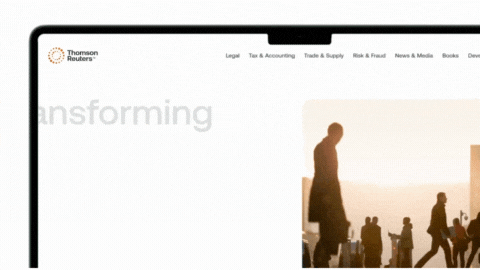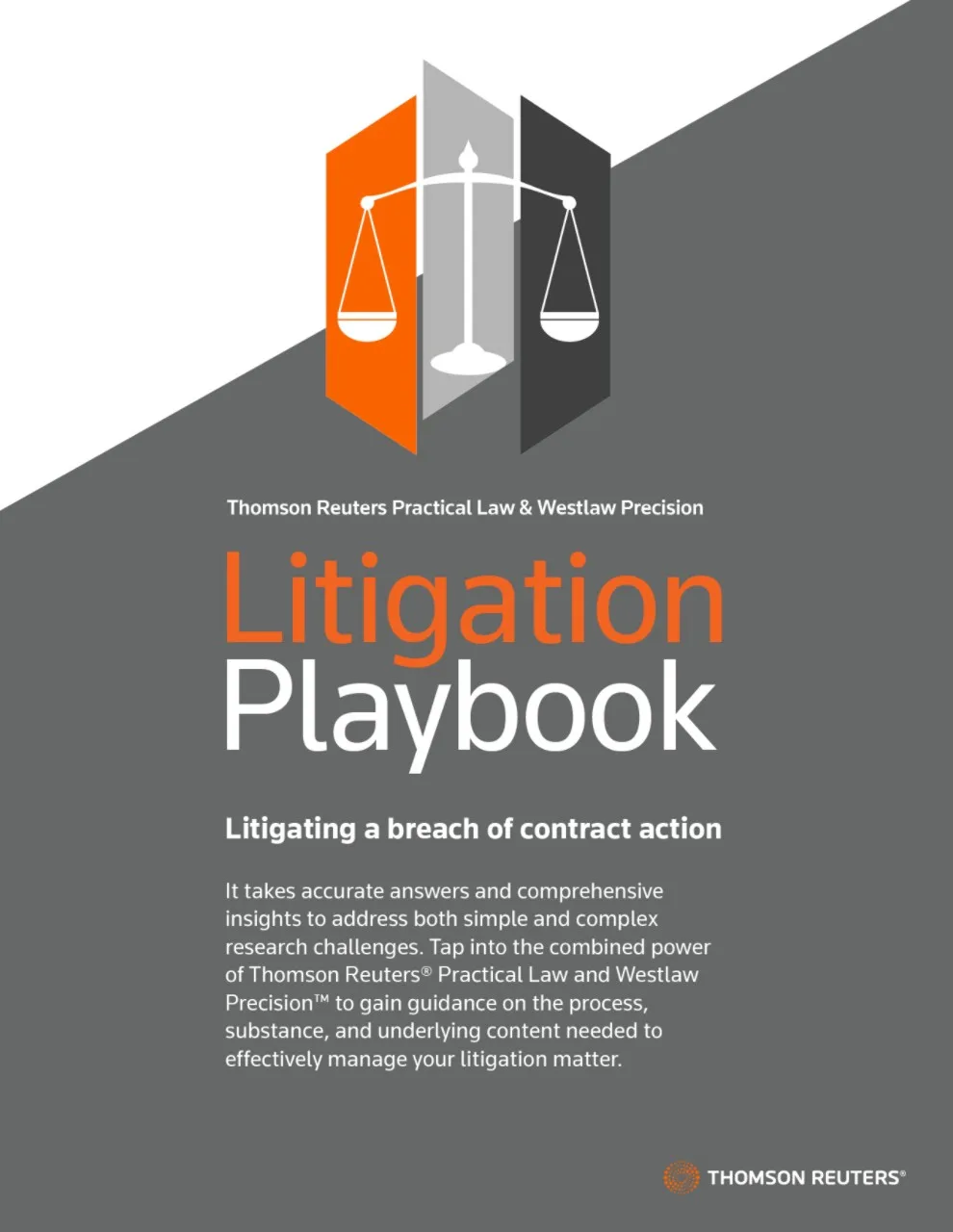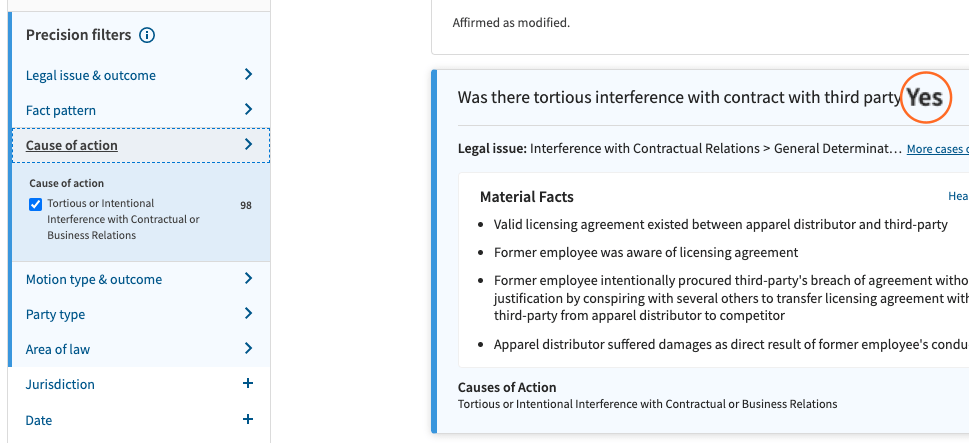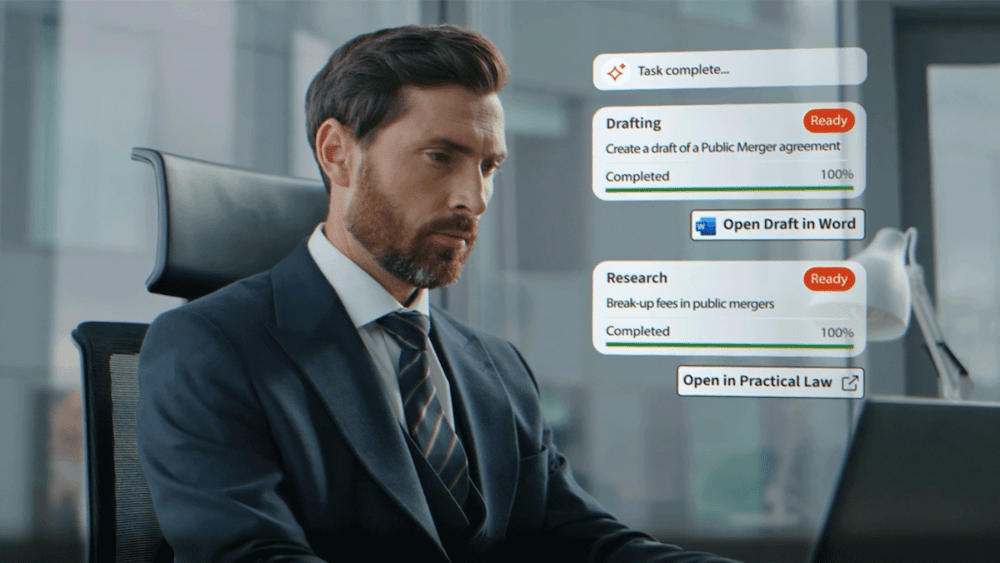According to law, when a tort is committed, the victim has the option to file a lawsuit against the alleged perpetrator. There are many different tort causes of action (CoA) recognized by New York’s tort statutes. While certain CoAs are rather frequent, others are more uncommon and cryptic.
If any individual suffers any injury, the victim can claim compensation from the wrongdoer with the help of lawyers and a court of justice. The famous Johnny Depp vs. Amber Heard (Depp v. Heard) defamation case is a classic example of the tort of defamation, in which the plaintiff won.
Jump to ↓
What is a tort cause of action?
Case where claim for tort was unrecognized: Kickertz v. New York University
Case where claim for tort was recognized: Stuart’s LLC v. Edelman

CoCounsel Legal
AI lawyers swear by: Trusted content, expert insights, and an all-in-one solution with ISO/IEC 42001:2023 certification
See it in action ↗What is a tort cause of action?
In New York, a tort is defined as any unlawful act that causes harm to another person, their property, reputation, or something similar.
Example: In the majority of tort situations, the injured plaintiff may file a claim for their lost wages as a result of missing time from work due to their injury. If the plaintiff’s injuries may have an influence on their ability to earn money in the future, they may also be able to file a claim for damages for loss of earning capacity.
List of tort causes of action
In an era where the world is a global market, there has been a significant rise in commercial litigation. The following are some of the major types of tort that lead to the CoA in New York including commercial litigation torts:
1. Misappropriation of trade secrets
The law in New York acknowledges that employers desire to reduce the possibility that their workers will utilize or profit from the employer’s proprietary information after the employment relationship has ended. However, courts carefully review these clauses, so they are only upheld to the extent that they comply with specific standards for reasonableness.
2. Conversion of business property
An intentional taking or unlawful use of another person’s property is generally involved in “conversion.” Money is converted “when there is a distinct, identifiable fund and a responsibility to refund or otherwise treat the specific fund in question in a particular manner.” First Department 2010: (Thys v. Fortis Sec. LLC, 903 N.Y.S.2d 368, 369)
The plaintiff is not required to demonstrate that the defendant “intended” to take or exercise rights over their property by the court. It is sufficient to demonstrate that the defendant acted without permission. Conversion examples include giving the plaintiff’s property to a person who is not entitled to it or unlawfully combining the plaintiff’s and defendant’s finances.
3. Deceptive and unlawful trade practices
The state attorney general as well as private individuals, are permitted to file a claim for unfair and illegal business practices under New York General Business Law. The Consumer Protection from Misleading Acts and Practices Statute, as it is known in New York, guards against deceptive acts and practices in the state’s business, trade, and commerce as well as in the provision of all services. Claims made under this legislation frequently involve consumer-targeted false or deceptive advertising.
4. Breach of fiduciary duty
A person has a fiduciary duty to act in the best interests of another person or entity. A specific trust or reliance on the fiduciary to use his or her discretion or knowledge for the benefit of the other party is typically present in the relationship between the parties. The three types of fiduciary obligations are the responsibility of care, the duty of loyalty, and the duty of truthfulness. Self-dealing or lying are two instances of behavior that would violate a fiduciary duty.
In order to establish a legal claim for breach, the plaintiff must show that there was a fiduciary connection and responsibility, that the obligation was broken, and that losses were sustained as a result of the breach.
5. Negligence
Of all tort claims, negligence is the most frequent. When a tortfeasor—the person who does a wrong—acts carelessly, negligence takes place. As a result, the tortfeasor is accountable for any injury their carelessness causes to another.
For a negligence claim to succeed in court, four components must be established. A plaintiff must establish the existence of all four conditions:
- Duty
- Breach
- Causation
- Harm
A negligence claim is insufficient if any one of these four components cannot be demonstrated. In order to prove negligence/carelessness, a person must have a duty to another person, violate that obligation, and then be responsible for the injury that resulted from that breach to the other person.
6. Assault
An intentional act by the defendant that causes the plaintiff to reasonably fear dangerous or offensive touch is known as a civil assault. Actual interaction is not necessary. In contrast to its counterpart in criminal law, where contact is typically necessary, this is rather different. An intentional tort against a person is assault.
7. Battery
When a defendant intentionally makes contact with the plaintiff that is injurious or objectionable, this is known as battery. When the torts of assault and battery coexist, they are referred to be assault and battery. The most analogous term to criminal assault is battery. An intentional tort (which would mandate that the plaintiff also demonstrate that the defendant acted “intentionally and knowingly”) against a person is battery.
8. Trespass to land
Trespass to land requires the defendant to intentionally invade or otherwise intrude on the plaintiff’s property. Criminal trespass and trespass to land are most comparable. It is a malicious injury to property.
9. Defamation
Defamation is when a defendant intentionally makes a false statement about the plaintiff and communicates it to a third party, often known as publishing it. This damages the plaintiff’s reputation. In one precedent-setting U.S. Supreme Court case New York Times Co. v. Sullivan, 376 U.S. 254, (1964), established the requirement that there must be “actual malice” on the side of the defendant making the defamatory statement in order for a public official to be entitled to damages for defamation. The defendant behaved with reckless disregard for the truth, or the defendant had real knowledge that the statement they were posting was false, according to the court’s definition..
10. Claims of Unjust Enrichment
Unjust enrichment, unlike the other CoA, is not inherently an intentional tort rather, New York’s courts have determined that it only necessitates a demonstration of the following:
The defendant gained an advantage.
at the plaintiff’s expense; additionally,
Restitution is required by equity and morality. Kaye v. Grossman 202 F.3d 611, 616 (2d Cir. 2000)
11. Extortion
Extortion occurs when someone forces or threatens to force another person to provide money or property under the threat of physical harm, property damage, or public humiliation, according to New York Penal Law 155.05(2)(e). For instance, if someone demands $5,000 to conceal an adulterous affair, they could be accused of extortion. Depending on the tactics a defendant employs to coerce someone into handing up their property, the gravity of an extortion conviction varies.
Case where claim for tort was unrecognized: Kickertz v. New York University
Facts
In relation to the university’s decision to expel the former dental college student from the program, the former student filed a plenary action against the university and three faculty members for false and misleading advertising, breach of contractual promises, defamation, and discrimination.
She also requested an Article 78 review of the case. The defendants’ request to have both the plenary action and the Article 78 petition dismissed was granted by the Supreme Court, New York County.
The student filed an appeal.
Decision
The Supreme Court’s Appellate Division, led by the Honorable Judge Andrias, ruled that:
- The university had no obligation to specify in minute detail potential graduation requirements and potential future curriculum changes;
- Student’s contract claims were not cognizable as a breach of contract CoA;
- Some of the student’s claims essentially challenged the expulsion decision, and therefore were limited to Article 78 proceeding;
- Student sufficiently proved malice element on defamation.
In the CoA, it is claimed that the defendants conspired and agreed to defame the plaintiff, as well as to make negligent representations and engage in tortious interference and that they did so “with the specific intent of harming Plaintiff, and maliciously interfering with her existing contracts and prospective business relationships.” Because New York does not recognize a distinct tort right of action for civil conspiracy, this claim was properly rejected.
Case where claim for tort was recognized: Stuart’s LLC v. Edelman
Headnotes for Stuart’s LLC v. Edelman drafted by attorney editors within Westlaw Precision with CoCounsel
Facts
A former employee (Defendant, Michael Hong) was sued for tortiously interfering with the former employer’s contractual relationship with one customer, tortiously interfering with future commercial contacts with another, and engaging in unfair competition in Stuart’s LLC, et al. v. Edelman, et al. On these grounds of action, the lower court ruled in favor of the plaintiff and granted significant damages. Hong filed a rebuttal.
Some of Hong’s points were supported by the New York Supreme Court, Appellate Division, Second Department. Finding that Plaintiff had only demonstrated its claims for tortious interference with contract, not the claims for tortious interference with business relations or unfair competition, it amended and decreased the award to the Plaintiff.
Even though claims for tortious interference with contracts and claims for tortious interference with business relationships are similar, the Court pointed out that the latter required evidence of additional guilt.
The Plaintiff must demonstrate that:
- It had a business relationship with a third party;
- The defendant was aware of this relationship and purposefully interfered with it;
- Defendant acted solely out of malice or used illegal or improper means, which constituted an independent tort or crime; and
- Defendant’s actions resulted in harm to the Plaintiff’s relationship with the third party.
The Second Department determined that there was no such evidence in the record and that the mere possibility that the defendant engaged in the behavior for his personal financial gain does not amount to enough culpable behavior to support a claim of tortious interference with a business relationship.
Decision
The Court found that former employee Hong’s conduct did not constitute unfair competition and vacated that portion of the award. Unless there is a restrictive covenant, a former employee can compete with his ex-employer as long as he or she does not utilize trade secrets in doing so.
The court determined that Hong had not used any of the plaintiff’s confidential information and was not improperly involved in causing the customers to sever their ties, based on the testimony of the clients whose businesses had been taken away from the plaintiff and the uncontested testimony of Hong himself.

Playbook
Litigating a breach of contract action: The answers you need and how to proceed when litigating a matter.
Download free playbook ↗Last thoughts
It is important to mention that, in contrast to a claim for breach of contract, a tort claim allows for the collection of both punitive and compensatory damages. A tort claim allows for the recovery of both a fine and money to make up for the victim’s losses. Unlike a breach of contract, torts often permit the plaintiff to seek recovery for pain and suffering. It should be noted that commercial torts are more common in the state of New York.









